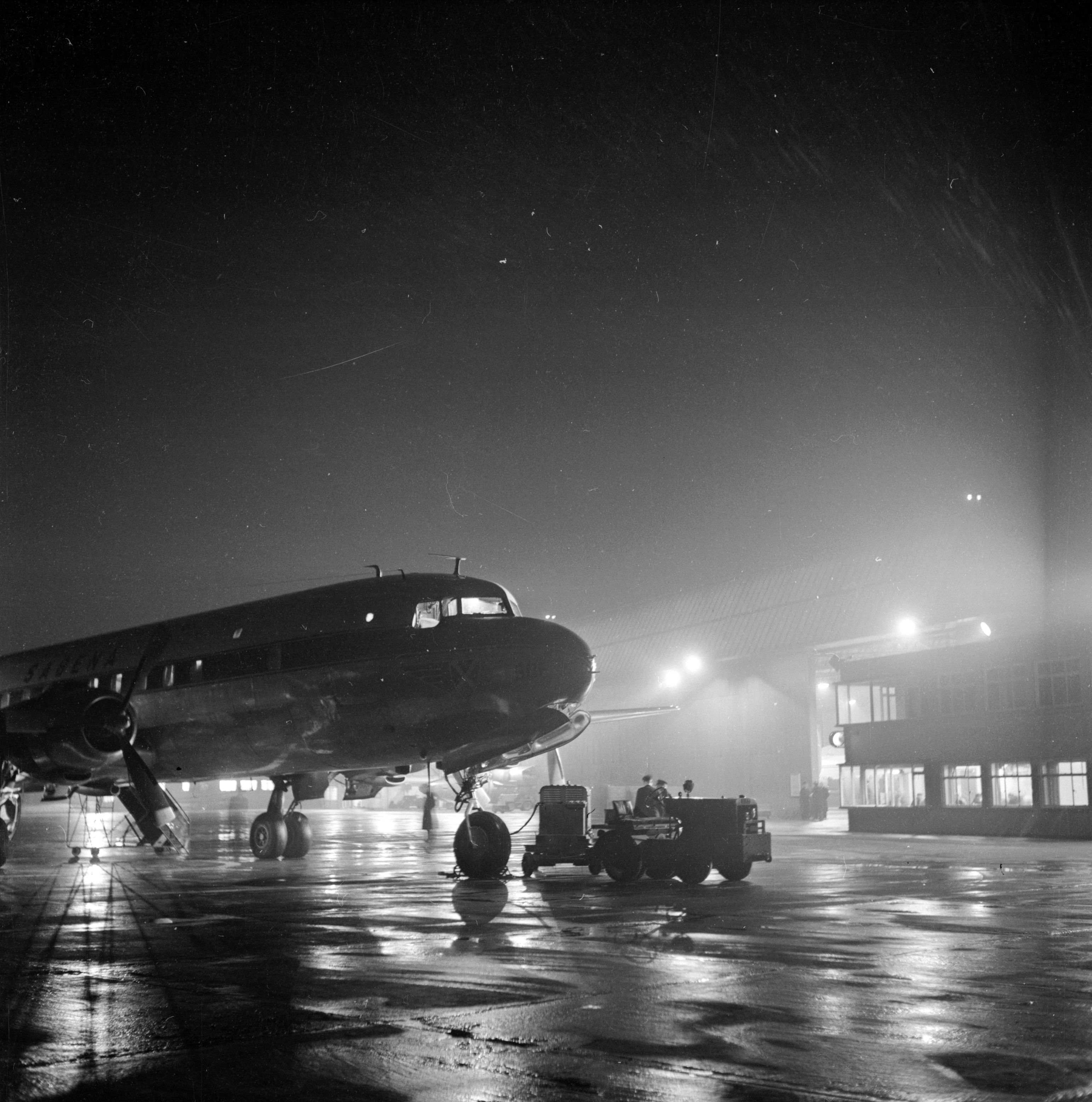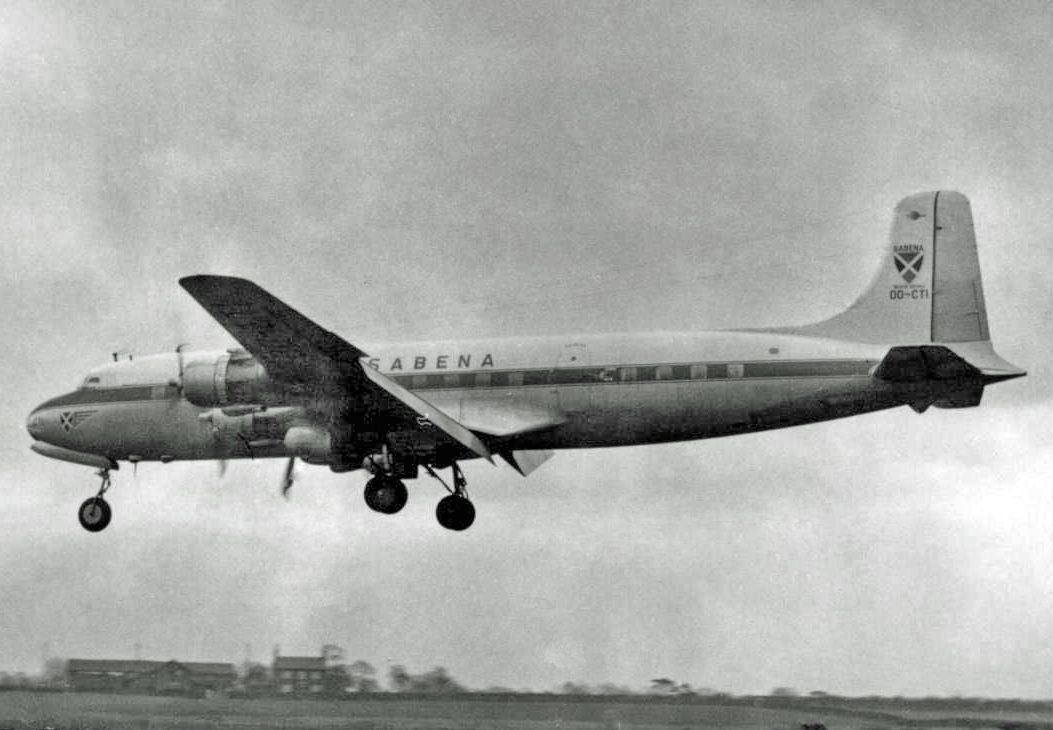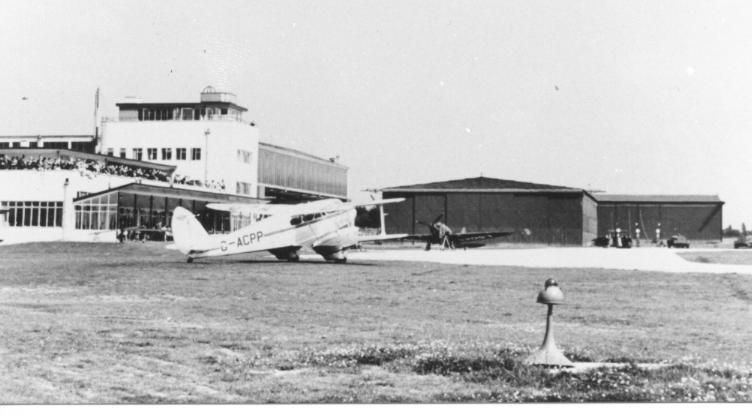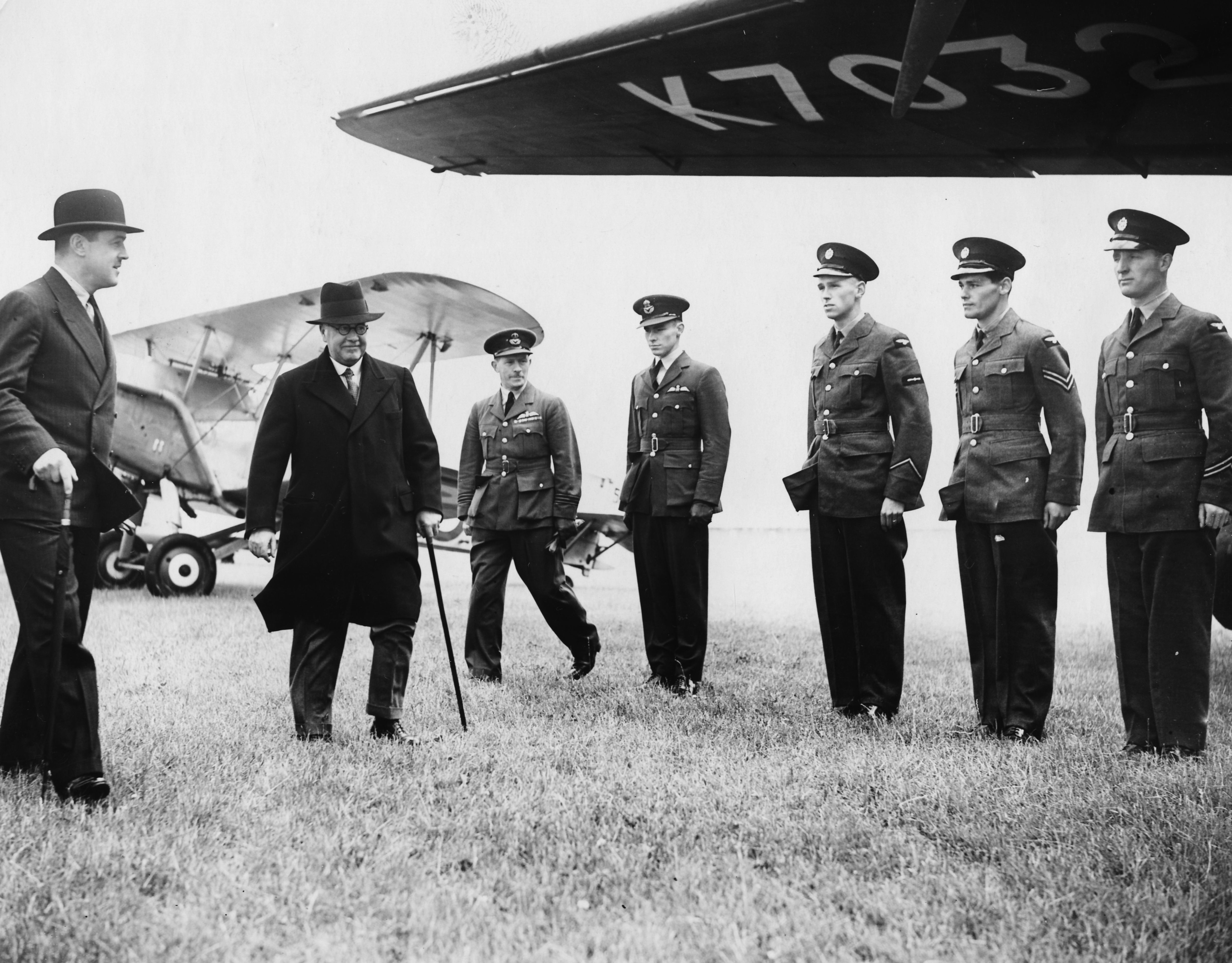Manchester Airport in England, like many international airports, had humble beginnings as a strip of grass with some buildings. But as aviation capabilities grew, so too did Manchester Airport.
Manchester Airport's beginnings
Photo: Fox Photos/Hulton Archive/Getty Images
Manchester Airport began as a grassy field just outside of Manchester, England, UK. The airport was officially opened on June 25, 1938, with a mixed civilian and Royal Air Force (RAF) airshow. Two days later, KLM would fly the first scheduled flight to Amsterdam with a DC-2. In 1938, 4,000 passengers would use the airport. Another 4,000 would in 1938 until sadly Adolf Hitler and Josef Stalin invaded Poland in September 1939 to begin World War II in earnest. Also in 1939, the RAF No. 613 (City of Manchester) Squadron would be stood up there with the Latin motto of, "Semper Parati" or always ready.
World War II service
Paratroopers from the 6th (Royal Welch) Parachute Battalion undergoing physical training with No. 1 Parachute Training School at Ringway, with a Whitley III in foreground, August 1942
Photo: Wikimedia Commons
Manchester Airport was repurposed as RAF Ringway. RAF Ringway would serve as a parachutist training school, a glider assault training school, and also an airport to fly out completed bombers. In fact, RAF Ringway was home to the maiden flight of the RAF's main sledgehammer against Nazi Germany - the Avro Lancaster bomber.
Meanwhile, the No. 613 City of Manchester Squadron would be moved to RAF Odiham at first to fly sorties for the Royal Air Force. First, the unit would help with the Dunkirk evacuation and then transition to tactical reconnaissance flying the P-51A Mk I Mustang. But come October 15, 1943, the squadron would be reassigned to RAF Lasham to fly the Mosquito for precision strikes. After the war and a temporary move to France, the squadron was suspended.
New Beginnings Post-WWII
At the conclusion of World War II, RAF Ringway was turned over to civilian control and its buildings would eventually be demolished for the growing Manchester Airport. By April 1, 1952, 24-hour flight operations would come to Manchester Airport. On October 28, 1953, cross-Atlantic flights to Idewald/JFK International Airport would begin with Sabena Airlines' Douglas DC-6s.


Also as to the airport's military service, the No. 613 City of Manchester Squadron was restarted on May 10, 1946, as a reserve squadron with late-model Spitfire fighters and Harvard trainers. The squadron would serve as a scrimmage team for active RAF squadrons and eventually transitioned to de Havilland Vampire jet fighters and Gloster Meteor jet trainers. But eventually, by March 10, 1957, its membership in the Royal Auxiliary Air Force would be its downfall as all RAF Royal Auxiliary Air Force flying units would be stood down on that date.
Nonetheless, Manchester Airport would continue to grow beyond her modest beginnings. By 1954, the airport would have its millionth passenger since the conclusion of World War II and the next year have tour flights to Belgium.
In 1962, a new Terminal 1 was completed. The Terminal was the first European terminal to have piers or a U with the base of the U for bag check, security, and ticketing. The next year, BOAC Boeing 707s would provide a jet bridge between Manchester and the United States.
In 1970, Boeing 747s would start flying out of Manchester and by 1989, a domestic-only Terminal 3 was completed. Today, Manchester Airport services the world, and between May 2021 and May 2022, it served 12,995,733 passengers.
Thoughts on this article? Please let us know in the comments.



_Parachute_Battalion_training.jpg)